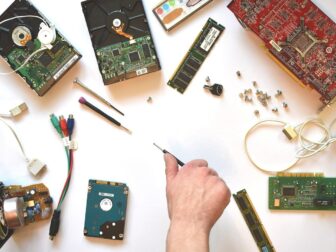Tag - IoT Hardware Development
Blog , January 22, 2024 , internet of things, IoT Hardware Development
Exploring the Frontiers of IoT Hardware Development: Trends and Innovations
Exploring the Frontiers of IoT Hardware Development: Trends and Innovations
The Internet of Things (IoT) has revolutionized the way we interact with the world around us, leading to the creation of smart homes, connected cities, and intelligent industrial processes. At the core of this technological transformation lies IoT hardware development, an area that has seen rapid growth and innovation in recent years. As businesses and consumers alike continue to demand more efficient, reliable, and feature-rich devices, the field of IoT hardware development rises to meet these challenges with cutting-edge solutions.
IoT hardware encompasses a broad range of components including sensors, actuators, processors, and connectivity modules, which are designed to work seamlessly together to collect, process, and transmit data. These devices must be highly adaptable, energy-efficient, and capable of operating in diverse environments. Developers are focusing on miniaturization and integration, packing more functionality into smaller devices, and ensuring that they can be easily incorporated into existing systems.
One of the primary trends in IoT hardware development is the move towards low-power wide-area networks (LPWAN), such as LoRaWAN, Sigfox, and NB-IoT. These technologies enable IoT devices to communicate over long distances while consuming very little power, making them ideal for applications where battery life and connectivity range are critical. Additionally, with the rollout of 5G networks, IoT devices are set to benefit from faster data speeds, lower latency, and improved reliability, further expanding their potential use cases.
Edge computing is another significant trend impacting IoT hardware. By processing data locally on the device, or at the edge of the network, response times can be drastically reduced, and bandwidth use is minimized. This is particularly important for applications requiring real-time decision-making, such as autonomous vehicles and industrial automation. Consequently, IoT hardware developers are increasingly integrating powerful processors and AI capabilities into their devices, enabling them to perform complex tasks without the need for constant communication with the cloud.
Security is also at the forefront of IoT hardware development. With a growing network of connected devices, the surface for potential cyberattacks expands. Developers are implementing robust security measures at the hardware level, including secure boot, trusted execution environments, and hardware-based encryption. These features help to protect devices from tampering and ensure the integrity and confidentiality of the data they handle.
Another area receiving significant attention is sustainability. As the number of IoT devices skyrockets, there is a pressing need to make them more environmentally friendly. Manufacturers are exploring the use of recyclable materials, designing for longer lifecycles, and developing energy harvesting technologies that allow devices to generate power from their surroundings, reducing dependency on batteries and the associated waste.
Finally, the advancement of open-source hardware for IoT is democratizing the development process. By providing access to open hardware designs and software, developers around the world can collaborate, innovate, and iterate on products at a much faster pace. This not only accelerates the development cycle but also helps to reduce costs, making IoT solutions more accessible to a wider audience.
In conclusion, IoT hardware development is a dynamic field that continues to push the boundaries of what’s possible in our interconnected world. As technology progresses, we can expect IoT devices to become even more integrated into our daily lives, driving efficiency, and opening new opportunities for innovation across various industries. Keeping abreast of the latest trends and advancements in IoT hardware development is essential for businesses looking to remain competitive and for consumers eager to take advantage of the latest smart technologies.
